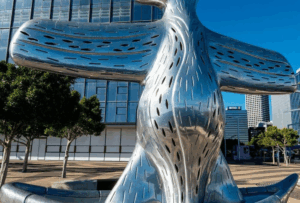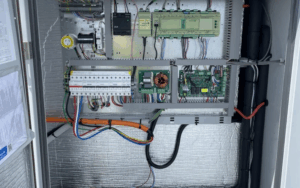Businesses face the challenge of reaching customers who have more choice, higher expectations, and less patience than ever before. A single advertisement or campaign is no longer enough to secure lasting results. Instead, businesses must understand the entire customer journey and deliver the right message at the right stage.
That’s the essence of full-funnel marketing. It recognises that people don’t buy instantly. They move through a series of stages, from first hearing about a brand to becoming loyal customers. By structuring campaigns across the full funnel, businesses can connect with audiences more effectively, build stronger relationships, and achieve sustainable growth.
Understanding the Funnel Framework
At its core, the marketing funnel is a model of the customer journey. It starts wide at the top with general awareness and narrows toward the bottom where customers make purchase decisions and continue engaging with a brand.
A full-funnel approach ensures no stage is neglected. Instead of focusing purely on awareness or sales, full-funnel marketing looks at the journey in its entirety. It means crafting campaigns that guide customers from initial discovery to long-term loyalty.
The funnel can be broken into four main stages:
- Awareness – capturing attention and reaching new audiences.
- Consideration – educating, informing, and building trust.
- Conversion – encouraging action and removing barriers to purchase.
- Retention and advocacy – ensuring customers stay engaged and become promoters.
Each stage has its own tactics, goals, and success measures. Let’s explore them in detail.
Stage One: Awareness
Awareness is about visibility. If customers don’t know you exist, they can’t buy from you. In this stage, the aim is to introduce your brand to as many relevant people as possible while making a strong first impression.
Growth marketers approach awareness differently from traditional campaigns. Instead of chasing broad exposure, they focus on targeting and engagement quality. It’s not just about who sees your ad, but who interacts with it, who clicks through, and who takes that first step down the funnel.
Practical strategies for awareness include:
- Search engine optimisation to appear where people are already looking.
- Paid ads designed to capture interest quickly.
- Content marketing such as blogs, guides, or infographics.
- Social media activity to spark conversation and brand recognition.
The goal is to spark curiosity and drive the first touchpoint without expecting immediate action.
Stage Two: Consideration
Once awareness is established, potential customers move into the consideration stage. This is where they weigh up their options, compare providers, and look for evidence of trustworthiness. Businesses that ignore this stage risk losing hard-won leads to competitors who invest more in education and nurturing.
At this stage, messaging needs to be clear, informative, and supportive. The aim is to answer questions, highlight benefits, and differentiate your product or service.
Effective tactics in the consideration stage include:
- Case studies that show how your product delivers results.
- Email sequences designed to nurture interest.
- Retargeting campaigns that remind people of what they viewed.
- Social proof, such as testimonials or reviews, to build credibility.
Full-funnel marketing ensures that consideration is not treated as an afterthought. Instead, it becomes a deliberate step that helps prospects move closer to conversion.
Stage Three: Conversion
Conversion is the stage where intent turns into action. A customer makes a purchase, books a service, or signs up for a subscription. While this is often the primary goal, growth marketing views conversion as part of the journey rather than the endpoint.
The challenge in this stage is friction. Even highly interested customers can be put off by complex checkouts, hidden fees, or unclear messaging. Growth marketers focus on optimising every element of the conversion process to remove these obstacles.
Practical ways to support conversion include:
- Streamlining sign-up and checkout processes.
- Using personalisation to make offers more relevant.
- Running A/B tests to optimise calls-to-action, page layouts, and offers.
- Offering incentives such as limited-time discounts or free trials.
Conversion isn’t about pushing people to buy; it’s about making it easy for them to take the step they already want to take.
Stage Four: Retention and Advocacy
One of the biggest mistakes in marketing is treating the purchase as the end of the journey. Retention is just as important as acquisition, if not more so. Loyal customers are more valuable because they buy again, refer others, and cost less to maintain than new leads.
Retention strategies focus on keeping customers engaged and satisfied. This can involve:
- Onboarding support to ensure they get value from the product.
- Exclusive content, offers, or rewards for repeat customers.
- Proactive customer service to address issues before they escalate.
- Regular updates that make customers feel valued and connected.
From retention comes advocacy. Happy customers become promoters, sharing their positive experiences and influencing others. This stage turns the funnel into more than a linear process—it becomes a cycle where satisfied customers feed back into awareness by recommending the brand to new audiences.
Why the Full-Funnel Approach Works
The full-funnel model works because it recognises reality. Customers don’t simply jump from awareness to purchase. They research, compare, hesitate, and return at different points before making decisions. By mapping strategies to each stage, businesses can guide people more smoothly through the journey.
The benefits of full-funnel marketing include:
- Greater efficiency – resources are spread across the journey, not wasted on one stage.
- Improved customer experience – consistent, helpful messaging builds stronger relationships.
- Sustainable growth – retention and advocacy provide long-term value beyond the initial sale.
- Actionable insights – data from each stage feeds back into refining strategies.
This holistic perspective ensures businesses don’t miss opportunities or leave gaps in the customer journey.
Building for Sustainable Growth
Full-funnel marketing isn’t just another buzzword—it’s a practical framework for growth. By addressing every stage of the customer journey, from awareness through to advocacy, businesses can create campaigns that deliver consistent results and stronger relationships.





